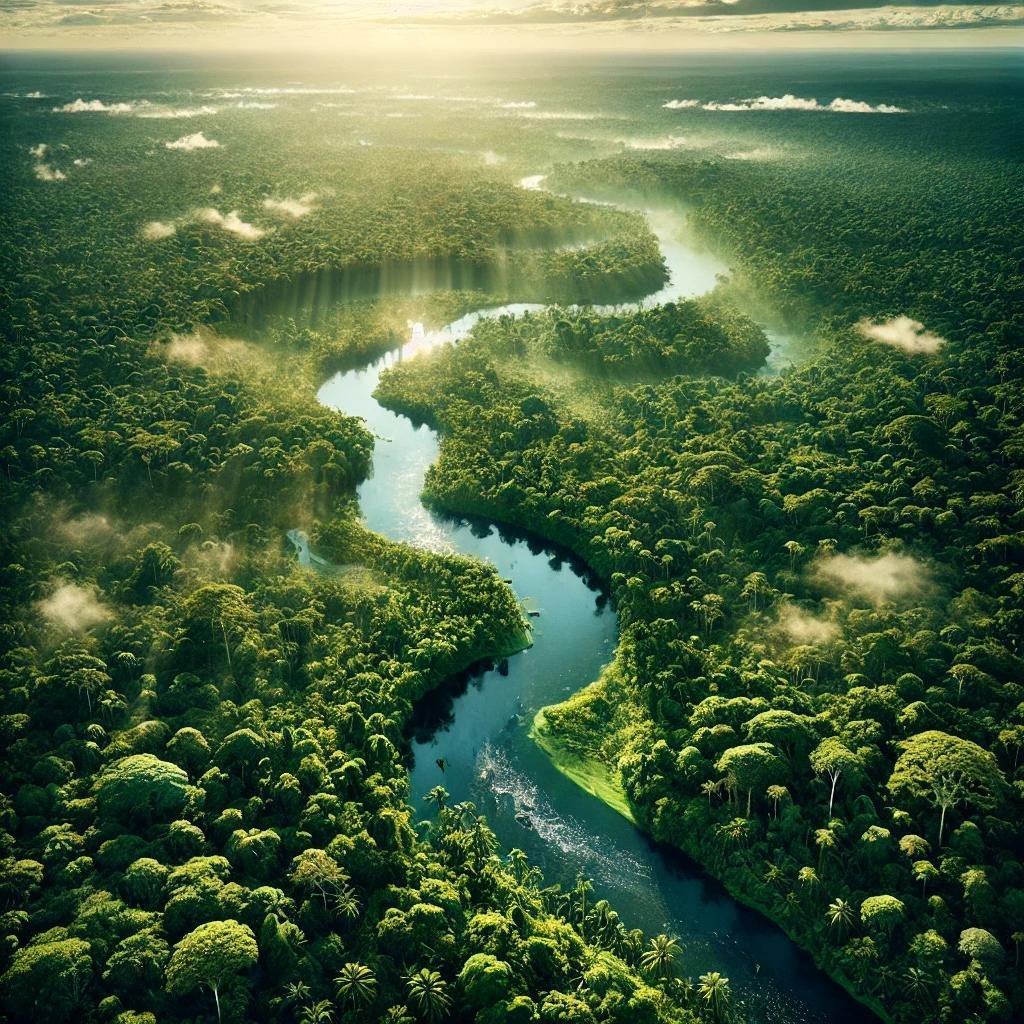The Amazon Rainforest: Nature’s Lungs and a Global Treasure
The Amazon Rainforest, often called the “Lungs of the Earth,” is one of the most biodiverse and ecologically significant regions on the planet. Spanning across nine countries in South America—Brazil, Peru, Colombia, Venezuela, Ecuador, Bolivia, Guyana, Suriname, and French Guiana—it covers an astonishing 5.5 million square kilometers (2.1 million square miles), making it the largest tropical rainforest in the world. This vast wilderness is not only essential for the health of our planet but also a source of wonder, knowledge, and resources.
1. Biodiversity Hotspot
The Amazon is home to an unparalleled diversity of plant and animal species. Estimates suggest that the rainforest houses around 390 billion individual trees belonging to roughly 16,000 different species. It is also home to approximately 10% of the world’s known species, including mammals, reptiles, birds, insects, and fish. Among its most iconic creatures are jaguars, sloths, macaws, anacondas, and river dolphins. New species are regularly discovered in the Amazon, contributing to the understanding of Earth’s biodiversity.
Key Fauna of the Amazon:
- Jaguar (Panthera onca): A symbol of power and mystery, this elusive big cat is at the top of the food chain in the Amazon ecosystem.
- Harpy Eagle (Harpia harpyja): One of the largest and most powerful birds of prey, known for its distinctive crown of feathers.
- Pink River Dolphin (Inia geoffrensis): A rare and unique species of dolphin that inhabits the Amazon’s freshwater rivers.
2. Vital Role in the Global Ecosystem
Often referred to as the “lungs” of the Earth, the Amazon plays a crucial role in regulating the planet’s climate. Through the process of photosynthesis, the Amazon absorbs vast amounts of carbon dioxide and produces around 20% of the oxygen we breathe. Additionally, the rainforest acts as a significant carbon sink, helping to mitigate the effects of climate change by storing more than 100 billion metric tons of carbon.
The Amazon also influences weather patterns far beyond South America. The moisture released by the forest into the atmosphere is responsible for forming rain clouds, which affect rainfall patterns globally. The Amazon River, the world’s largest by volume, flows through this region, feeding into ecosystems and livelihoods as it journeys to the Atlantic Ocean.
3. Indigenous Cultures and Knowledge
Beyond its ecological importance, the Amazon is home to hundreds of indigenous groups, many of whom have lived in the forest for thousands of years. These communities possess a wealth of traditional knowledge about the rainforest’s flora and fauna, much of which has been passed down through generations. Indigenous groups rely on the forest for food, medicine, and spiritual practices.
The knowledge held by these communities has proven invaluable for modern science, particularly in areas such as medicine and botany. Numerous pharmaceutical drugs have been derived from plants in the Amazon, including treatments for malaria, cancer, and heart disease. Protecting the rights and territories of these indigenous peoples is essential not only for preserving their way of life but also for the continued exploration of the Amazon’s untapped potential.
4. Threats to the Amazon
Despite its critical role, the Amazon Rainforest faces a variety of threats, most notably deforestation. Every year, large swaths of the forest are cleared for agriculture, cattle ranching, mining, and infrastructure projects. Brazil, home to the largest portion of the Amazon, has seen significant deforestation rates over the past decades, driven in large part by the global demand for soy, beef, and timber.
Deforestation not only leads to the loss of habitat for countless species but also contributes to climate change by releasing stored carbon into the atmosphere. Furthermore, forest degradation exacerbates the risk of forest fires, which are becoming increasingly common in the region due to both human activity and changing climate conditions.
Other threats include illegal logging, mining, and dam construction, all of which disrupt local ecosystems, displace indigenous communities, and have long-lasting environmental consequences.
5. Conservation Efforts
In response to the growing threats, governments, NGOs, and local communities have initiated various conservation efforts to protect the Amazon. Protected areas and indigenous reserves now cover large portions of the rainforest. Organizations such as the World Wildlife Fund (WWF), Greenpeace, and the Rainforest Trust work tirelessly to raise awareness, combat deforestation, and restore damaged areas of the rainforest.
Sustainable development initiatives, like eco-tourism and responsible farming, also offer potential solutions. These practices provide economic alternatives for local communities while preserving the forest’s integrity. The international community is increasingly recognizing the need for coordinated global action to conserve the Amazon.
6. Why the Amazon Matters to Everyone
The health of the Amazon Rainforest is not just a regional issue; it is a global one. Its ability to regulate the Earth’s climate, harbor biodiversity, and maintain freshwater systems makes it indispensable to life on Earth. Protecting the Amazon is a critical part of the fight against climate change, biodiversity loss, and environmental degradation.
Furthermore, as we continue to explore the Amazon’s depths, we may find new species, medicines, and ecological insights that could benefit humanity for generations to come. Its preservation, therefore, is not merely an environmental issue but a question of the future of life on Earth.
Conclusion
The Amazon Rainforest stands as a testament to the richness of the natural world and the delicate balance that sustains life on Earth. Its dense canopies, winding rivers, and hidden treasures remind us of the interconnectedness of all living things. As stewards of the planet, it is our responsibility to protect and preserve this magnificent wilderness for the well-being of future generations and the health of our planet.
The Amazon is not just a forest; it is the heartbeat of the Earth. Its protection is a call to action for all of humanity.

